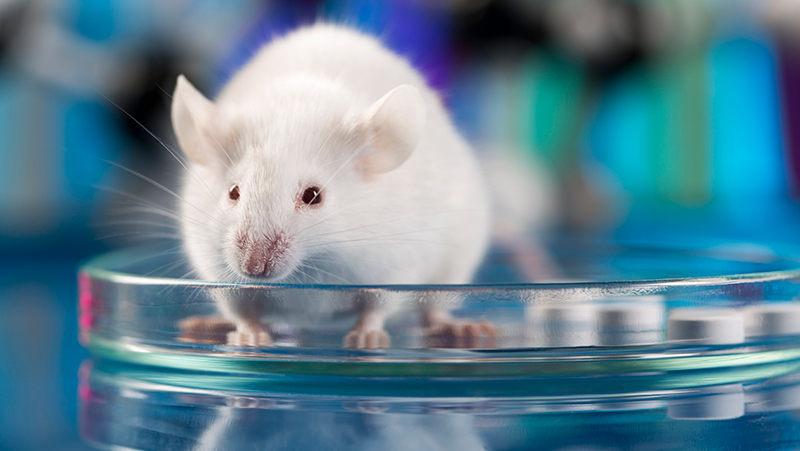EPA Takes Steps to Reduce and Replace Animal Use for Chemical Testing
In June 2016, President Barack Obama signed into law the Lautenberg Chemical Safety Act, the first substantive amendment to the Toxic Substances Control Act in its 40-year history.
The Physicians Committee and other organizations worked to ensure that the law, which strengthened the Environmental Protection Agency’s (EPA) ability to regulate industrial chemicals, would not result in a massive increase in animal testing, and we were successful in lobbying for several provisions which required the agency to minimize and replace animal testing for the chemicals it regulates. However, we were shocked to learn that in 2017, the agency required or requested hundreds of animal tests in which tens of thousands of animals would be used.
We reported this alarming increase earlier this year and took a number of steps, including writing to and meeting with the EPA. Since then, we’ve continued to monitor the new chemicals program, including documents called consent agreements between submitters of chemical pre-manufacture notices (PMNs) and the agency. Here, we report several positive developments.
Following the publication of our initial analysis in March 2018, top EPA officials assured us that the agency had implemented policies which would reduce animal testing requirements in the new chemicals program. One major change was that it had begun relying more on pended testing requests than on triggered testing requirements. (If the agency requires a triggered test, the test would automatically be required if the company began to manufacture a chemical after a certain period of time or above a certain production level. If it requests a pended test, the agency puts restrictions on the manufacture, processing, distribution, or use of the chemical, and the test may be required if the company wants to modify these restrictions.) Our continuing review confirms this shift. Currently, the agency’s ChemView database reports no triggered testing required for PMNs received after June 2017.
The EPA has also recently issued Significant New Use Rules (SNURs) for many chemicals subject to these pended testing requests. This is a positive development because these rules affect not only PMN submitters but anyone who intends to use the chemicals. Such users must notify the agency before beginning a new use identified as significant. In its SNURs, the agency typically refers to the pended testing it requested in the corresponding consent agreements. Therefore, the agency can reconsider its pended testing requests when—or if—it receives such notices. In addition, SNURs are rules subject to public notice and comment requirements. The Physicians Committee reviews the agency’s SNURs and comments when needed to remind it of its obligations under TSCA to reduce the use of vertebrate animals in the testing of chemicals and promote the development and implementation of nonanimal test methods and strategies.
In addition, beginning in June 2018, the EPA replaced specific test requirements in consent agreements with general statements describing the types of information which may be potentially useful. For example, rather than require a mouse local lymph node assay, it may simply state that information on skin sensitization (or allergy) may be useful. Further, the agency has followed these statements with a reminder encouraging PMN submitters to consult with it on the use of alternatives to animal testing to generate this potentially useful information. This new approach increases the likelihood that PMN submitters will address the agency’s information needs with nonanimal test methods and strategies wherever possible. For skin sensitization, these include nonanimal approaches described in a new policy issued in April 2018 that the agency will accept in place of mouse and guinea pig tests.
Finally, in October 2018, the EPA determined that 13 new chemicals are not likely to present an unreasonable risk of injury to health or the environment under the intended conditions of use described in the PMNs and proposed SNURs to address any additional, reasonably foreseen conditions of use. This means that while marketing of the chemicals can commence immediately, anyone who intends to use a chemical under conditions not described in the PMN must notify the agency, which would then reopen its review of the chemical under the new conditions of use. This common sense interpretation of TSCA’s requirement to determine the potential for risk of new chemicals allows the agency to address conditions of use once they become intended and focus its efforts on those chemicals most likely to present risks to health or the environment.
In the meantime, the EPA released its strategic plan for implementing nonanimal methods, which helps to inform chemical companies of their responsibilities to reduce and replace animal test methods and informs them of nonanimal methods the EPA will accept.
While there are remaining issues we will continue to push the EPA to address, we are hopeful that these changes reflect a renewed commitment on the part of the agency to adhere to the amended TSCA’s requirements to reduce and replace the use of animals in the testing of chemicals and promote the development and implementation of nonanimal test methods and strategies. We will continue to review each new consent agreement and periodically report our findings.








